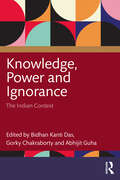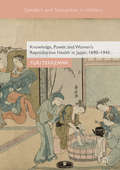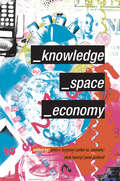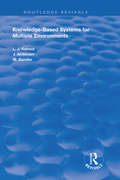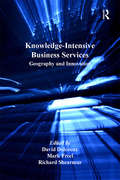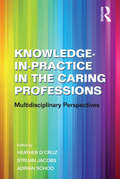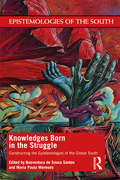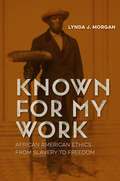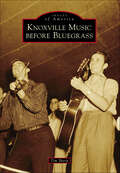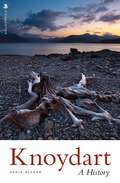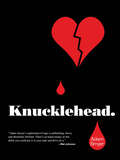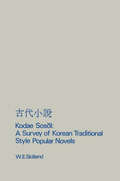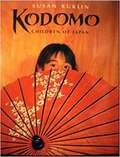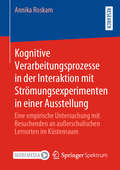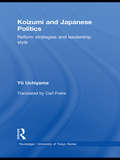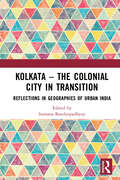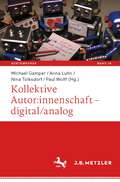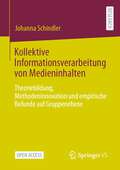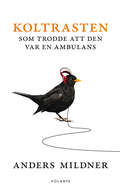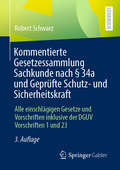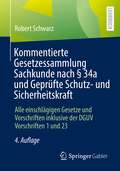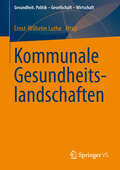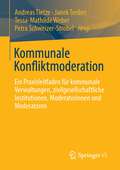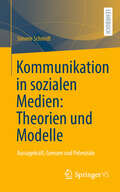- Table View
- List View
Knowledge, Power and Ignorance: The Indian Context
by Abhijit Guha Gorky Chakraborty Bidhan Kanti DasWhat is knowledge, and ignorance? How is it decided? Do power and power relations influence this process? Does the spread of knowledge lead to more ignorance? Is ignorance socially produced? Is knowledge always socially contextualized? This book deals with these important questions on the interplay of knowledge, ignorance and power located in varied contexts in India.As systematic knowledge grows, so does the possibility of ignorance. Ignorance is a state which people attribute to others and is loaded with moral judgment. Thus, being underdeveloped often ‘implies a kind of stupidity or failure’. This volume seeks to be premised in a framework where ignorance is understood as being a socially produced and maintained phenomenon, where the ways of knowing and not knowing are interdependent. It is a novel attempt for an academic re-orientation of the Knowledge–Ignorance paradigm through a process of re-interpretation of the bounded purview attached with the existing epistemological understandings. It focuses on concrete case studies, often with an ethnographic stint. The volume critically looks at various aspects: Epistemological Issues; Understanding Community Perspectives and the State; Natural Resources, Power and Ignorance; Media and Production of Non-Knowledge; and other emerging areas. Each essay bears a striking similarity – that of understanding the complex processes and dynamics of the production of ignorance in a field of commonly held beliefs of 'knowledge' - be it scientific, societal, religious, magical or political - through the overarching realm of power.This interdisciplinary volume will be of interest to a cross-section of academics and students of sociology, social anthropology, political science, human geography, history, public policy and development studies.
Knowledge, Power, and Women's Reproductive Health in Japan, 1690–1945 (Genders and Sexualities in History)
by Yuki TerazawaThis book analyzes how women’s bodies became a subject and object of modern bio-power by examining the history of women’s reproductive health in Japan between the seventeenth century and the mid-twentieth century. Yuki Terazawa combines Foucauldian theory andfeminist ideas with in-depth historical research. She argues that central to the rise of bio-power and the colonization of people by this power was modern scientific taxonomies that classify people into categories of gender, race, nationality, class, age, disability, and disease. Whilediscussions of the roles played by the modern state are of critical importance to this project, significant attention is also paid to the increasing influences of male obstetricians and the parts that trained midwives and public health nurses played in the dissemination of modern powerafter the 1868 Meiji Restoration.
Knowledge, Space, Economy
by John R. Bryson Peter W. Daniels Nick Henry Jane PollardFirst published in 2000. Routledge is an imprint of Taylor & Francis, an informa company.
Knowledge-Based Systems for Multiple Environments (Routledge Revivals)
by John Anderson Ladislav J. Kohout Wyllis BandlerFirst published in 1992, this volume identifies the problems facing the designer of multi-environmental knowledge-based systems, and explains the principles that must be followed in order to obtain successful results. Systems called upon to function in a variety of widely differing cultural and natural environments can only do so satisfactorily if from the very beginning they have been designed with this versatility in mind. For the first time, the know-how for this often formidable design task has been gathered together and presented here. This study was written to an overall plan, with chapters commissioned from a group of research of quite diversified back-grounds who had deeply explored their subjects. Each topic was thus covered in close connection with the others, so as to form a coherent whole. While primarily aimed at workers in Artificial Intelligence and Expert Systems, as well as designers of other kinds of sophisticated software, the contents of the book are of wider validity, just as the multi-environmental demands are of wider incidence. Manufactures, exporters and importers of computing technology with a large knowledge component will also find their concerns addressed.
Knowledge-Intensive Business Services: Geography and Innovation (Economic Geography Series)
by Mark FreelOver the last decade, there has been an increasing amount of research on knowledge-intensive business services (KIBS) and innovation. This book brings together current thinking on this subject from geographic and territorial perspectives. Researchers from across Europe and North America present contributions from a wide range of disciplinary approaches including management studies, innovation studies and geography. They explore areas such as innovation related cooperation between KIBS firms and their industrial partners, how KIBS firms mediate business knowledge and the impact that KIBS make in local, regional and international contexts. The book offers a timely exploration of the role played by the geographic and institutional environment in the processes that link KIBS, innovation and territory across different contexts.
Knowledge-in-Practice in the Caring Professions: Multidisciplinary Perspectives
by Struan JacobsKnowledge-in-Practice in the Caring Professions explores the nature and role of knowledge in the practical work of the caring professions. It focuses on knowledge of the practical over the theoretical, looking at the application of theory and the implementation of skill, judgment and discretion. Containing contributions from experts in a variety of fields, the research within this book offers a unique perspective on professional practice as multi-disciplinary, illustrating shared and overlapping understandings in knowledge-in-practice between the different professions as well as understandings that are distinctive to each discipline. It underlines that in order to effectively address the range of social, psychological and health problems facing contemporary societies, professionals need to engage in cooperative models of practice.
Knowledges Born in the Struggle: Constructing the Epistemologies of the Global South (Epistemologies of the South)
by Boaventura De Sousa Santos Maria MenesesIn a world overwhelmingly unjust and seemingly deprived of alternatives, this book claims that the alternatives can be found among us. These alternatives are, however, discredited or made invisible by the dominant ways of knowing. Rather than alternatives, therefore, we need an alternative way of thinking of alternatives. Such an alternative way of thinking lies in the knowledges born in the struggles against capitalism, colonialism, and patriarchy, the three main forms of modern domination. In their immense diversity, such ways of knowing constitute the Global South as an epistemic subject. The epistemologies of the South are guided by the idea that another world is possible and urgently needed; they emerge both in the geographical north and in the geographical south whenever collectives of people fight against modern domination. Learning from and with the epistemic South suggests that the alternative to a general theory is the promotion of an ecology of knowledges based on intercultural and interpolitical translation.
Known for My Work: African American Ethics from Slavery to Freedom
by Lynda J. Morgan“Demonstrates that the ‘emancipation generation’ bequeathed values, ethical frameworks, and identities to multiple ensuing generations, shaping religious, educational, and cultural institutions as well as labor and political organizations.”—Peter Rachleff, editor of Starving Amidst Too Much and Other IWW Writings on the Food Industry “Shows how far off the mark arguments are that claim that black Americans generally have internalized inferiority and engage in self-defeating behaviors.”—William A. Darity Jr., coeditor of Boundaries of Clan and Color: Transnational Comparisons of Inter-Group Disparity In Known for My Work, Lynda Morgan looks beyond slavery’s legacy of racial and economic inequality and counters the idea that slaves were unprepared for freedom. By examining African American social and intellectual thought, Morgan highlights how slaves built an ethos of “honest labor” and collective humanism. As moral economists, slaves and their descendants insisted that economic motives formed the foundation of their exploitation and made sophisticated arguments about the appropriate role of labor in a just and democratic society. Morgan considers how slaves evaluated the violence, coercions, and deceits employed by slaveholders as means to maintain power, as well as the ways in which fugitive slaves active in the abolition movement stressed to nonslaveholding audiences how they were complicit in a regime fraught with moral decay. She also points to the racial rhetoric of Jim Crow architects and how it was readily identified as elaborating on slave-era racial propaganda in new ways for an old reason: to establish a rigid economic inequality in the Industrial Revolution. From the late antebellum era through Reconstruction, labor organizing in the 1930s and 1940s, the civil rights movement of the 1960s and 1970s, and the reparations movement of the twenty-first century, Morgan offers an unprecedented view of African America. What emerges from the literature is a clear critique of racism, an embrace of self-defense, and the belief that they deserved reparations for lost labor. Enslaved laborers thought for themselves, imagined themselves, and made themselves. Moreover, their descendants share this moral legacy as a foundation for citizenship and participation in democracy.
Knoxville Music before Bluegrass (Images of America)
by Tim SharpSince colonial times, generations of families from Ireland, Scotland, Wales, and England have settled in Knoxville and East Tennessee. Early on, they arrived with ballads, stories, instruments, and folk music from their former homes. "Songcatchers," including Francis James Child, Olive Dame Campbell, Maud Pauline Karpeles, Cecil J. Sharp, William Francis Allen, Lucy McKim Garrison, Charles Pickard Ware, and George Pullen Jackson, journeyed deep into the remotest areas of East Tennessee to capture their songs in the late 19th and early 20th centuries. This music existed almost unchanged until the introduction of commercial recording and radio broadcasting in the 1920s. The historic recording sessions in Bristol, Tennessee, in the summer of 1927 sparked new genres of music, and through the contribution of musicians like Lester Flatt, Josh Graves, Dolly Parton, Earl Scruggs, Ralph Stanley, the Carter Family, Bill Monroe, and many others, Knoxville and East Tennessee are acknowledged for the roles they played in the birth of country and bluegrass music.
Knoydart: A History
by Denis RixsonA local historian chronicles the famously remote region of the Scottish Highlands from its early Viking settlers to the present day. Located in the &“Rough Bounds&” of northern Scotland, the remote region of Knoydart is Britain&’s last true wilderness. Deriving its name from Viking settlers, the desolate peninsula was home to warlike inhabitants who became notorious in the 18th century under the ruthless leadership of Coll of Barrisdale. Notorious across Scotland, his protection racket gave the word &“blackmail&” to the English language. Knoydart was also a fertile recruiting ground for the Jacobites. But in the 18th and 19th centuries the area suffered large scale emigration, partly as a result of the brutal clearances of 1853. A long century of decline followed until, in 1948, it became the scene of the famous land-raid by the &“Seven men of Knoydart.&” Today, Knoydart continues to be the focus of land settlement and reform controversies. Local historian Denis Rixson places these issues in their larger historical context. It is the story of a community&’s ongoing struggle to preserve itself against the harshness of the environment and the cynical exploitation of man.
Knucklehead
by Adam SmyerKnucklehead is the only title shortlisted for the 2018 Ernest J. Gaines Award for Literary Excellence!"By setting his novel in the '90s, Smyer, who lives in Oakland, has crafted some brutal deja vu. As [protagonist] Marcus reflects on Rodney King, the Million Man March and the Oklahoma City bombing, we think of Freddie Gray, Black Lives Matter and school shootings that have become a way of life. And when Marcus laments San Francisco's dwindling black population, here we are more than 20 years on, and it's only gotten worse. We should all be furious."--San Francisco Chronicle"Here is a list of things you'll need to read this book: ample space for stretching out the side stitches you'll get from laughter; half a box of tissues for the most gripping and harrowing dramas at the heart of the novel; a fresh stress ball for the tense situations the protagonist finds himself in (both of his own doing and not); and just a bit of that space in your heart to see people, in all their complexity, trying to do their best."--Pittsburgh Post-Gazette"This book is bold in how it treats the reader as an insider to the reality of American blackness. It can be, in turns, lyrically poignant, cynical, hilarious, and infuriating."--Foreword Reviews, Starred Review"In this comic debut novel, lawyer Marcus Hayes careens through the racially divisive 1990s while trying to manage his compulsive anger, chaotic love life, and economic misfortunes...Smyer gives Marcus a sardonic and hilarious voice reminiscent of a Paul Beatty protagonist and endows him with a troubled psychology that plumbs the nuances of black male identity."--Kirkus Reviews"Marcus is an intelligent, acerbic, and often hilarious narrator, bringing a fresh, biting perspective to the social and racial tensions of the time that, as debut novelist Smyer makes clear, are not particularly different from today."--Library Journal"While loss and loneliness are at its core, Knucklehead is a mordantly funny book."--San Francisco Chronicle"While not strictly a crime novel, Smyer's debut Knucklehead does contain a whole lot of guns, violence, and rage, as well as plenty of love and sadness. A black lawyer in the late 80s through the mid-90s deals with micro and macro aggressions from a society determined to treat him as a criminal. Also, there are cats. Lots of cats."--Literary Hub"While the provocative subject material will take readers to a sometimes-uncomfortable place, this brilliant debut is also deeply, darkly funny...This is one of those books that simply has to be discussed, as it managed to tackle difficult topics with unexpected humor and pathos. While Marcus is a troubled character, his journey and the choices he makes will provide rich meat for discussion about race in America and how justifiable anger can turn toxic."--IndiePicks Magazine"[A] masterpiece...In this, his debut narrative, Smyer dramatically encapsulates the ancestral trauma, the collective guilt and suffering of tens of millions of people. Indeed he has scored big. Real big...A must buy."--Kaitur News (Guyana)"Smyer's debut explores themes of the self in chaos; the prose is clean as bone and the anger is focused and piercing."--Michigan Quarterly ReviewIn Knucklehead we meet Marcus Hayes, a black law student who struggles, sometimes unsuccessfully, with the impulse to confront everyday bad behavior with swift and antisocial action. The cause of this impulse is unknown to him.When Marcus unexpectedly becomes involved with the brilliant and kind Amalia Stewart, her love and acceptance pacify his demons. But when his demons return, he is no longer inclined to contain them.
Kobo and the Wishing Pictures
by Yoshie Noguchi Dorothy W. BaruchKobo is a small Japanese boy whose father paints ema, or wishing pictures, for so many customers that he finds no time to paint a single one for his own family-not even for Kobo, who wants one so badly to take to the shrine on Wishing Day. As the customers come and go, Kobo has a chance to observe many types of people and to consider many different kinds of wishes, none of which seems quite right for him. It is all very discouraging until, at last, he begins to get an idea, and then . . . But that is the secret of the story.In meeting Kobo and the many other interesting people in this book, the young reader is introduced to a number of the charming manners and customs of rural Japan, as well as to a number of situations that parallel those experienced by children almost everywhere. As the author expresses it in her introduction: "In this book there are many pictures of ema. We hope that the wishes shown with them, along with the story of Kobo and his family, will bridge customs and culture through our children's seeing that the children of Japan have the same human feeling of affection, of rivalry, of sadness and joy."
Kodae Sosol
by W. E. SkillendFirst Published in 2004. This work is concerned with kodae sos?l, particularly with investigating what kodae sos?l exist or have existed in texts in Korean in a traditional style. One aim of this catalogue of titles is to make it more widely known what there is to be read. It is hoped that those who can read them will do so, and perhaps even agree that they ought to be made easier, by reprinting, annotation or translation, for others to read.
Kodomo: Children of Japan
by Susan KuklinSeven Japanese children are the guides for this informative, insightful look at daily life and traditional Japanese customs and culture. Nozomi describes his noisy math class, where the teacher calls out addition problems and students scramble to find the answer on their abacus. Beautiful Ai tells of the special importance of her kimono, once her mother's, and explains the painstaking process of putting it on. Keiko and Masaaki enjoy the physical and mental strength that comes with their study of kendo and judo, and Masako and Natsuko delight in calligraphy and Japanese dance. .-Lauren Peterson
Kognitive Verarbeitungsprozesse in der Interaktion mit Strömungsexperimenten in einer Ausstellung: Eine empirische Untersuchung mit Besuchenden an außerschulischen Lernorten im Küstenraum
by Annika RoskamDer Küstenraum ist ein dynamisches System, welches sensibel auf Veränderungen reagiert. Aufgrund der hohen Dynamik ist das Wattenmeer 2009 zum UNESCO Weltnaturerbe ernannt worden. Um diese besondere Bedeutung auch in außerschulischen Lernorten zu vermitteln, wird eine Ausstellung zu Strömungsphänomenen konzipiert und erprobt. Dabei werden kognitive Verarbeitungsprozesse von Besuchenden in der Interaktion mit Experimenten zu Strömungsphänomenen untersucht. Im Sinne des Design-based Research werden Weiterentwicklungen und Generalisierungen herausgearbeitet. Die Ergebnisse der empirischen Untersuchung sind in dieser Arbeit dargestellt, insbesondere werden Leitlinien für die Konzeption bzw. Weiterentwicklung von interaktiven Ausstellungen abgeleitet.
Koizumi and Japanese Politics: Reform Strategies and Leadership Style (Routledge/University of Tokyo Series)
by Yu UchiyamaThis book offers an empirical and theoretical study of the Koizumi administration, covering such issues as the characteristics of its political style, its domestic and foreign policies, and its larger historical significance. The key questions that guide its approach are: what enabled Koizumi to exercise unusually strong leadership, and what structural transformations of Japanese politics did he achieve? Uchiyama looks at policy-making processes, newly created institutional arenas such as the Council on Economic and Fiscal Policy, Koizumi’s populist strategy, foreign policy, and neo-liberal convictions to assess the historical significance of his administration and seek out the basis for its wide public support. Finally, the book undertakes a normative evaluation of the merits and demerits of the Koizumi administration’s political style, and compares it with the Abe and Fukuda administrations that came after. This book will be of interest to scholars and students with an interest in comparative politics, administrative reform, and contemporary Japan.
Kolkata — The Colonial City in Transition: Reflections in Geographies of Urban India
by Sumana BandyopadhyayThis book explores the spatial characteristics of the city of Kolkata in India in terms of the physical, economic, social, political, and environmental aspects of urban geography, and focuses upon the inherent processes that impact its transformation. It discusses different facets of urban geography and highlights the contemporary challenges of a major primate city in South Asia, which represents the conflicts between the traditional and the modern, the rich and the poor, the skyscrapers and the shanties. With its detailed empirical research and mapping exercises based on real-time remote sensing data, the book offers an understanding of a range of contemporary urban issues. It examines the spatial consequences of urban sprawl, land-use changes, ecological crisis, climate change, critical disasters, dynamics of the peri-urban interface, neighborhood restructuring, debates around heritage conservation, housing poverty, gray spaces, governance and the political landscape of the city. This book will be useful to students, teachers, and researchers of geography, especially human geography and urban geography, urban studies, urban development and planning, regional planning, social geography, governance, ecology, economics, and South Asian studies. It will also benefit urban planners, development professionals, and those interested in the study of the city of Kolkata and its transformations.
Kollektive Autor:innenschaft – digital/analog (Kontemporär. Schriften zur deutschsprachigen Gegenwartsliteratur #19)
by Michael Gamper Paul Wolff Anna Luhn Nina TolksdorfDas Thema der kollektiven Autor:innenschaft, bereits in den 1990er Jahren mit Blick auf die damals neuen technologischen Möglichkeiten breiter diskutiert, scheint aktuell erneut auf ein wachsendes Interesse zu stoßen, etwa unter dem Stichwort der ›Kollaboration‹. Der vorliegende Band fragt nach der Schwellenfunktion der digitalen Wende, die sich in eine Folge von weiteren medialen, epistemischen, ästhetischen und sozialen Schwellen und historisierbaren Konstellationen einreiht, die Konzepte von kollektiver Autorschaft/Autor:innenschaft hervorgebracht und grundsätzlich verändert haben. Die partizipatorische Kultur sowie Verfahren der »produsage«, die sich in den medialen Konvergenzbewegungen der jüngeren Vergangenheit feststellen lassen, haben Zurechnungsstrategien von Autorschaft, an denen lange festgehalten wurde, außer Kurs gebracht. Dazu sind auch die in der Tradition der Avantgarden stehenden Projekte der generativen Codeliteratur zu zählen, die sich von den auf und mittels Plattformen produzierten und distribuierten Texten durch das vorausgesetzte Code-Wissen und den gezielten Gebrauch digitaler Technik unterscheiden lassen. Wurde die automatische Generierung von Text in der Vergangenheit oft als Auslagerung von Autor:innenschaft auf die Maschine konzipiert, rückt hier die Frage nach der »Arbeitsteilung zwischen Mensch und Maschine« in den Vordergrund.
Kollektive Informationsverarbeitung von Medieninhalten: Theoriebildung, Methodeninnovation und empirische Befunde auf Gruppenebene
by Johanna SchindlerDas vorliegende Open-Access-Buch leistet einen zusammenhängenden theoretischen, methodischen und empirischen Beitrag zum Verständnis von Informationsverarbeitung in Gruppen. Menschen nutzen und verarbeiten Medieninhalte häufig gemeinsam. Trotzdem gibt es erst wenig und vornehmlich auf die Individualebene fokussierte Forschung zu kollektiver Medienrezeption bzw. kollektiver Informationsverarbeitung im Allgemeinen. Als theoretischer Beitrag wird das Model of Collective Information Processing (MCIP) entwickelt. Es verknüpft Erkenntnisse zu Gruppenprozessen mit Erkenntnissen zu individueller Informationsverarbeitung und unterscheidet zwischen verschiedenen kollektiven Verarbeitungsmodi. Anschließend wird als methodischer Beitrag ein standardisiertes Befragungsinstrument ausgearbeitet, das von Kleingruppen beantwortet werden kann. Dieses wird im Rahmen eines Mixed-Methods-Designs mithilfe qualitativer Beobachtungen und Gruppendiskussionen getestet, validiert und weiterentwickelt. Als zentraler empirischer Beitrag wird schließlich eine Onlinebefragung von n = 182 natürlichen Kleingruppen zu den Einflussfaktoren, Eigenschaften und Auswirkungen kollektiver Medienrezeption durchgeführt. Damit versucht die vorliegende Arbeit nicht nur unmittelbar Wissen über Informationsverarbeitung in Gruppen zu generieren, sondern auch mittelbar zu mehr Gruppenforschung zu inspirieren und motivieren.
Koltrasten som trodde att den var en ambulans
by Anders MildnerHur låter världen? Frågan kan tyckas märklig, det är väl bara att lyssna. Problemet är bara att vi aldrig varit särskilt duktiga på det, istället har vi i modern tid gjort precis allting för att slippa höra. Boken är en vindlande historia om spöken, militärens ljudvapen, koltrastar som tror att de är ambulanser, sjungande neandertalare, tyska filosofer, arkitektur, döva valar, klasskamp, den onde Kahn från Star Trek och laboratorieframställd popmusik. Med stor träffsäkerhet rör sig berättelsen mellan historia och populärkultur, mellan samhällsfenomen och den personliga reflektionen. Chansen är stor att boken bidrar till att du plötsligt hör sådant som du aldrig tänkt på och börjar förändra hur du arbetar och lever. Du kommer utan tvivel förstå hur vår ljudmiljö faktiskt är ett val som hänger nära ihop med hur vi förhåller oss till samhällsutvecklingen, och vilka som oftast blir vinnare respektive förlorare. Anders Mildner är journalist och författare. Han har bland annat jobbat på Sydsvenskan, Expressen och Svenska Dagbladet. I ett tidigare liv har han drivit musikbolag och spelat trummor i 90-talsbandet Beagle.
Kommentierte Gesetzessammlung Sachkunde nach § 34a und Geprüfte Schutz- und Sicherheitskraft: Alle einschlägigen Gesetze und Vorschriften inklusive der DGUV Vorschriften 1 und 23
by Robert SchwarzAlle relevanten Gesetze und Vorschriften der Sicherheitswirtschaft auf einen Blick - die ideale Hilfe bei der Prüfungsvorbereitung und ein schnelles Nachschlagewerk für die Praxis. Der Umgang mit den Gesetzestexten wird durch Kommentare und Hinweise zu den wichtigsten Paragrafen erleichtert, Lernende gewinnen ein besseres Verständnis für die Anwendung der Normen. Die Zusammenstellung ergänzt die beiden Lehrbücher "Sachkundeprüfung im Bewachungsgewerbe IHK" und "Geprüfte Schutz- und Sicherheitskraft IHK" sowie das dazugehörige Übungsbuch. Die aktualisierte 3. Auflage wurde dem Rechtsstand Frühjahr 2020 angepasst, insbesondere in den Bereichen Gewerbeordnung (GewO) und Waffengesetz (WaffG).
Kommentierte Gesetzessammlung Sachkunde nach § 34a und Geprüfte Schutz- und Sicherheitskraft: Alle einschlägigen Gesetze und Vorschriften inklusive der DGUV Vorschriften 1 und 23
by Robert SchwarzAlle relevanten Gesetze und Vorschriften der Sicherheitswirtschaft auf einen Blick – die ideale Hilfe bei der Prüfungsvorbereitung und ein schnelles Nachschlagewerk für die Praxis. Der Umgang mit den Gesetzestexten wird durch Kommentare und Hinweise zu den wichtigsten Paragrafen erleichtert, Lernende gewinnen ein besseres Verständnis für die Anwendung der Normen. Die Zusammenstellung ergänzt die beiden Lehrbücher „Sachkundeprüfung im Bewachungsgewerbe IHK“ und „Geprüfte Schutz- und Sicherheitskraft IHK“ sowie das dazugehörige Übungsbuch. Die gründlich durchgesehene und verbesserte 4. Auflage entspricht dem aktuellen Rechtsstand 2020/2021 und berücksichtigt auch die Gewerbeordnung (GewO) und das Waffengesetz (WaffG).
Kommunale Gesundheitslandschaften
by Ernst-Wilhelm LutheIm deutschen Gesundheitssektor werden vorhandene Gestaltungspotentiale bei weitem nicht ausgeschöpft: die maßgeblichen Entscheidungen werden auf zentralstaatlicher Ebene getroffen - häufig zum Nachteil einer bedarfsgerechten Versorgung der Bevölkerung vor Ort. Egal ob es um Fragen gesundheitlicher Prävention, um Schnittstellenprobleme zwischen den Sektoren, um die Bewältigung altersabhängiger Krankheiten und Krankheitsfolgen, um die Inklusion behinderter Menschen oder um die bessere Vernetzung der gesundheitlichen Akteure geht - letzten Endes hängt alles ab von den jeweiligen Gegebenheiten einer "kommunalen Gesundheitslandschaft". Was also muss vor Ort getan werden? Das Buch entwickelt umsetzungsfähige Perspektiven einer dezentralen Gesundheitspolitik: es beschreibt die gesundheitlichen Herausforderungen bezogen auf bestimmte Zielgruppen, bietet ein umfangreiches Arsenal von Handlungsinstrumenten, beschreibt Verantwortlichkeiten im institutionellen Gefüge staatlicher und privater Akteure und ermöglicht einen Ausblick auf die örtliche Wirtschafts- und Unternehmensentwicklung bei Ausbau einer gut funktionierenden Gesundheitsregion. Mit seinem Erscheinen in der neuen Reihe "Gesundheit. Politik -Gesellschaft - Wirtschaft" (hrsg. von E.-W.Luthe und J.N. Weatherly) steht das Buch für die wachsende Erkenntnis, Gesundheitspolitik als interdisziplinäre Aufgabe zu betrachten.
Kommunale Konfliktmoderation: Ein Praxisleitfaden für kommunale Verwaltungen, zivilgesellschaftliche Institutionen, Moderatorinnen und Moderatoren
by Andreas Tietze Janek Treiber Tessa-Mathilde Weber Petra Schweizer-StrobelDer Band fasst in kompakter und verständlicher Form die wesentlichen Aspekte von Veranstaltungs- und Konfliktmoderation zusammen und richtet sich damit an all diejenigen, die an der Ausrichtung von Dialog- und Beteiligungsformaten interessiert sind. Diese sollen befähigt werden, eigene Diskussionsformate durchzuführen und erfolgversprechend zu moderieren. Ohne entsprechendes Vorwissen und bestimmte Planungsschritte scheitern Moderationsversuche oft oder liefern nicht die gewünschten Ergebnisse. Derlei Situationen sollen mit Hilfe des Buches vermieden werden. Es bildet das Resultat jahrelanger theoretischer und praktischer Arbeit auf dem Feld von Veranstaltungsplanung, -durchführung und insbesondere -moderation. Nach einem einführenden Teil zu Aspekten von Sprache, Rhetorik, nonverbaler Kommunikation und dem Umgang mit eigenen inneren Widerständen, werden Vorbereitung, Durchführung und Nachbesprechung von Moderationen diskutiert und in verschiedenen Facetten vorgestellt. Welche Veranstaltungsorte eignen sich, welche nicht? Welche Diskussionsformate sind in welcher Situation angemessen? Wann ist welcher Moderationsstil anzuwenden? Diese und weitere Fragen werden in den verschiedenen Kapiteln beantwortet. Ergänzt wird das Handbuch durch umfangreiches Material aus der Praxis.
Kommunikation in sozialen Medien: Aussagekraft, Grenzen und Potenziale
by Simone SchmidtIn diesem Lehrbuch werden zentrale und klassische Kommunikationsmodelle vorgestellt, die für das Medien- und Kommunikationsmanagement relevant sind. Ausgewählte Modelle und Theorien werden an die Social-Media-Kommunikation jeweils weiterentwickelt und angepasst, um die Aussagekraft, Grenzen und Potenziale für Aktivitäten in den sozialen Medien auszuloten.
